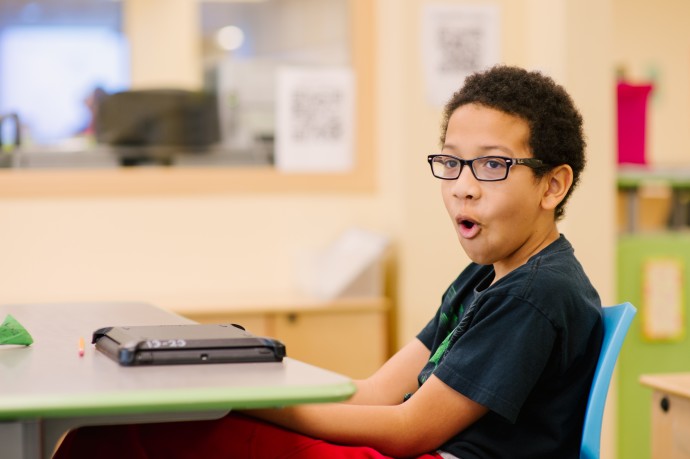Some teacher friends and I were talking the other night:
Teacher 1: “What do you do when you ask the class a question and it’s just dead silent? Not in a good way, but in a really, really awkward way.”
Teacher 2: “I make cricket noises. We all laugh and then usually a student speaks up.”
Teacher 3: “I rephrase the question because it’s probably too hard. I try to wait a bit before doing that, though. I tell myself the awkward silence is really just wait-time.”
Teacher 1: “Margaret? What does DSC-I mean, CCC-say about awkward pauses?”
Me: <long silent pause>
Teacher 2: “Chirp-chirp-“
And then we all laughed. I ended up explaining that having students turn to a partner gives them a chance to grapple with a difficult question before sharing with the whole class. I still believe that, but the idea of rephrasing questions prompted me to wonder: What is the best way to phrase a question so students will respond?

Ideally, questions open up a discussion, but sometimes a question can bring a whole conversation to a screeching halt. That question, the one that prompts awkward silences (and, apparently, crickets), is usually a closed-ended question. It requires a “right” answer the students don’t know, so they sit still and avert their eyes.
When we, as teachers, retain control of a conversation, we are asking closed-ended questions. This teacher-centered exchange may feel more like an interview (or a test) than a conversation. Closed-ended questions can usually be answered in a limited number of ways, and students may shy away from responding if they aren’t certain they know the “right” answer.
We know we’ve asked an open-ended question when we invite students to talk about their own thinking and experiences, stimulating different opinions, solutions, and ideas. When students hear open-ended questions, they often want to talk, whether it be with their partner or the whole class. Our role as teachers shifts, and we become facilitators and, better yet, listeners. This new role affords us the opportunity to get to know our students as thinkers.
If we’re lucky, the programs we teach include lessons with lots of open-ended questions. If we’re even luckier, we can think of the right open-ended question to ask when a moment presents itself. But are there tricks teachers can use to keep questions open-ended? Yes!
Writing at the Center for the Collaborative Classroom gives me the opportunity to think deeply about the questions teachers ask. For each question I write, I have time to consider, “What might the students say?” And if there is only one answer, the question is cut or tweaked. Opening up a question can be as simple as adding, “What makes you think that?” or “Why or why not?”
Some of the most successful whole-class discussions I’ve heard have been prompted by a single open-ended question with follow-ups as simple as: “What did you think about what [Alex] shared?” or “What more can you say about what [Eli] said?” or, my favorite, “What do others think?”

And open-ended questions aren’t always questions! We can always follow up with, “Say more about that” once a student has begun to share. A colleague began small-group discussions by saying, “So?” and letting the students launch into the topics they wanted to address. Granted, her students had lots of practice answering open-ended questions, but what a great goal to strive for!
There are lots of wonderful ways to stimulate and maintain class discussions and many ways to handle those awkward pauses. If you’re interested in learning more about open-ended questioning, you might enjoy reading an excerpt from our Lesson Study course book: Chapter 3: Open-Ended Questions: Stretching Children’s Academic and Social Learning. I’d love to hear about your classroom experiences as well. And, in your comments, please-say more about that.
